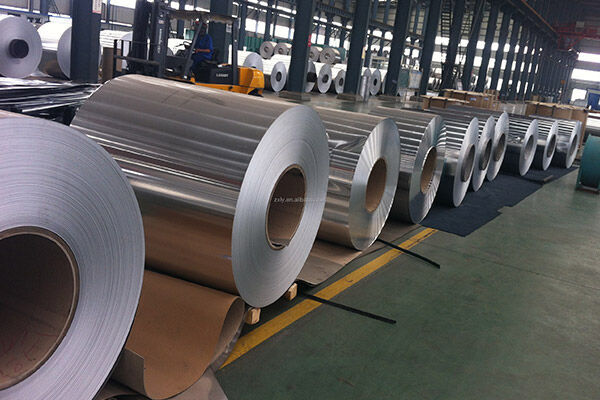
In many ways, aluminum is the perfect metal. It is strong, lightweight, heat and corrosion resistant. It is also a good conductor. Best of all, it's affordable.
Aluminum is also the most abundant metal in the Earth's crust, the third most abundant element after oxygen and silicon. but straight
Aluminum is the most commonly used metal in the world after steel. Aluminum is an essential part of nearly every part of our lives, from the cars we drive to food packaging.
Aluminum is most widely used when it is combined with other metals to form aluminum alloys. Alloying process improves aluminum properties for various applications

How Aluminum is Made
The first step in making aluminum is finding aluminum ore.
looking for aluminum ore
Aluminum is easy to combine with other elements, and rarely exists in the form of pure metal in nature. Aluminum compounds are found in most common rock types, including clays, slates, shales, granites and anorthosites.
The most important bauxite mineral is bauxite, a rock containing about 52% alumina, along with impurities such as iron oxide, silica, and titania. Bauxite is widely found in surface or near-surface deposits in many regions of the world, including Europe, Asia, Australia and South America.
mining aluminum
Geologists use sampling and drilling to determine the location of bauxite deposits. Once a deposit is found, it is mined in the open pit. Blow the bauxite out and pull it out with a shovel or rope.
Ninety percent of mined bauxite is made into alumina, which is then melted into aluminium. The remaining 10 percent is used for other purposes, including making abrasives, furnace linings and proppants for the oil industry. 4 tons of high-quality bauxite can produce 2 tons of alumina, which can produce 1 ton of aluminum.

Refined Bauxite
Bauxite is refined using the Bayer process, first developed by Carl Joseph Bayer in 1888. The Bayer process has four steps: digestion, clarification, precipitation and calcination.
Digestion
Bauxite is ground up, mixed with caustic soda, and pumped into pressure tanks where it is steam heated and pressurized. This causes the caustic soda to react with the aluminum compounds in the bauxite to form a sodium aluminate solution. Unwanted impurities remain in the so-called red mud.
clarify
Next, the sodium aluminate solution is passed through a gas blow tank and the pressure is reduced to atmospheric pressure. Red mud can be removed with clarifiers and filter cloths. The clarified solution is cooled in a heat exchanger before being pumped into a tall silo.
precipitation
Aluminum hydroxide seeds were added to the sodium aluminate solution to induce precipitation. During this process, the aluminum becomes solid. This causes the large aluminum crystals to be filtered and washed to remove water and other impurities.
calcined
Now aluminum hydroxide crystals need to be calcined, which is a heat treatment process that controls the amount of gas supplied. The crystals are heated to temperatures in excess of 960°C using a rotary kiln to remove any remaining impurities, leaving behind a fine white powder known as alumina or aluminum oxide.

Aluminum smelting
Smelting is the process of extracting aluminum from alumina. This is achieved through the hall-héroult process invented in 1886 by Charles Martin hall and Paul héroult.
The smelting process takes place in steel reduction tanks filled with molten electrolyte, where a carbon anode is used to pass an electric current through the electrolyte. Alumina is then added to the molten surface. Galvanic deposition can collect and siphon molten aluminum.
The molten aluminum is then poured into molds to form ingots. At this stage its purity is 99.8%. Now, it can be further refined to produce ultra-pure aluminum or alloyed with other metals.
ultra pure aluminum
High-purity ultra-pure aluminum (99.99%) is soft and lacks tensile strength. However, it is corrosion resistant and an excellent conductor. Ultra-pure aluminum is used in chemical equipment, electronic components and gasoline manufacturing.
aluminum alloy
High-purity ultra-pure aluminum (99.99%) is soft and lacks tensile strength. However, it is corrosion resistant and an excellent conductor. Ultra-pure aluminum is used to make chemical equipment, electronic components and gasoline.
recycled aluminum
Aluminum can be recycled indefinitely without loss of quality. This makes it one of the greenest metals on earth. Incredibly, most of the aluminum ever produced is still in use today.
Contact Us
Shandong PipeNil Metal Products Co., Ltd
Tel:+86 15763515130
E-mail: sales@pipenil.com
Address: Room 701, Building 8, Shangang Xintiandi, Industrial South Road, Jinan Area, China (Shandong) Pilot Free Trade Zone
